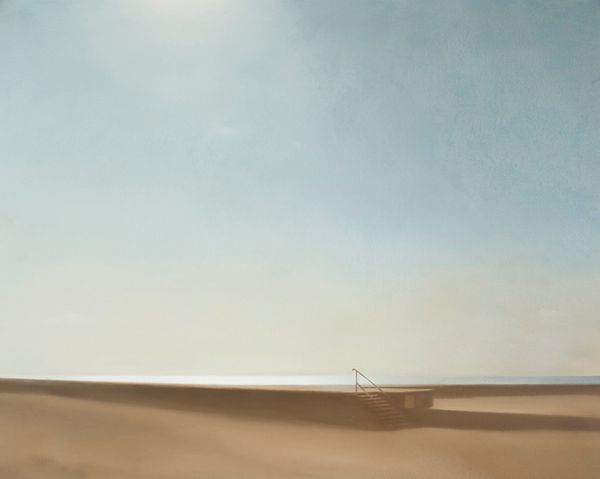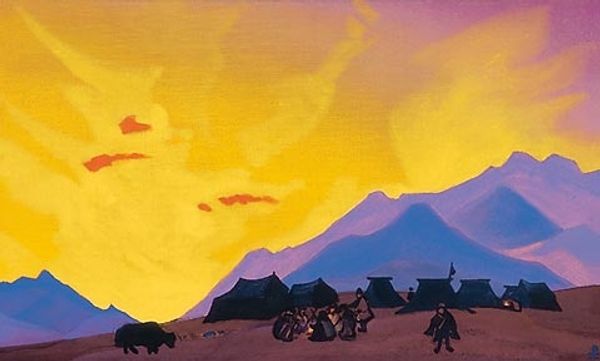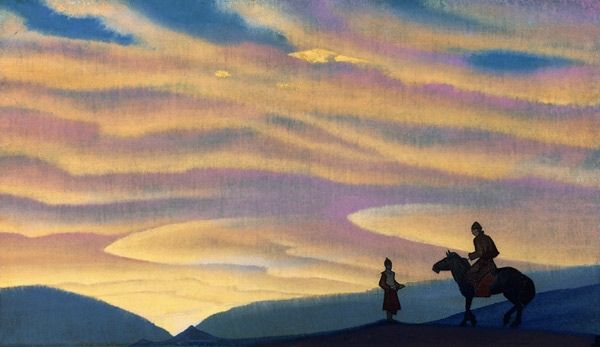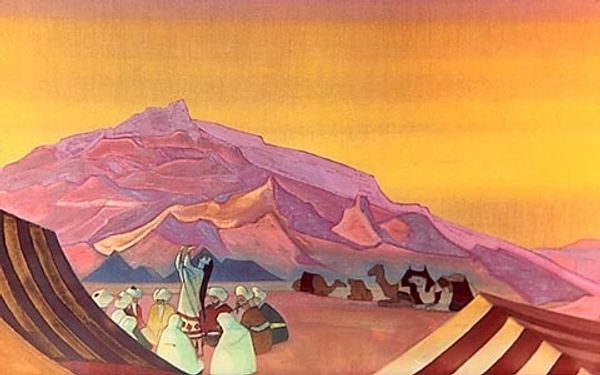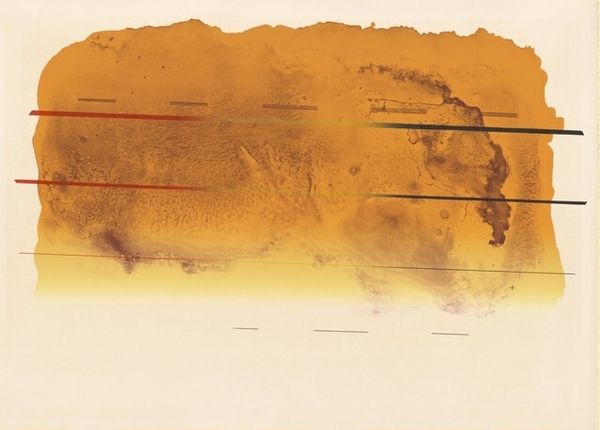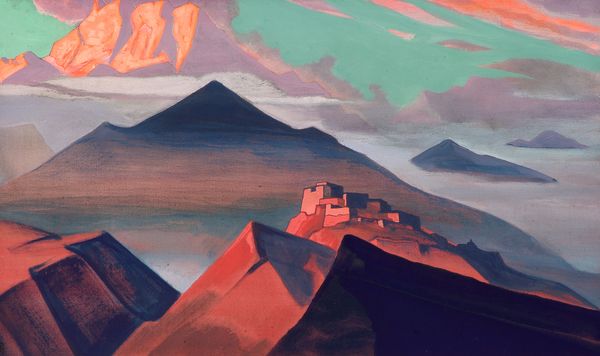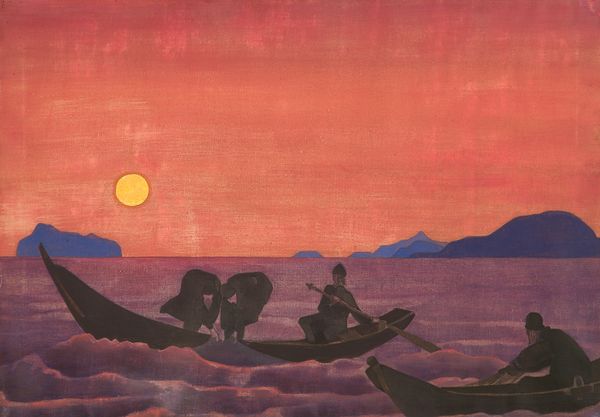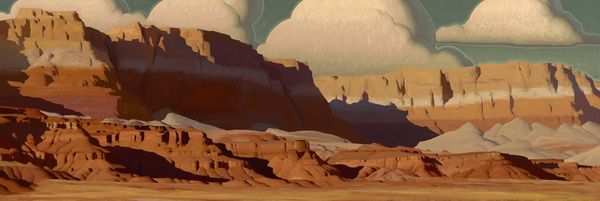
painting, watercolor, architecture
#
water colours
#
painting
#
landscape
#
watercolor
#
orientalism
#
horse
#
men
#
modernism
#
watercolor
#
architecture
Dimensions: 79.5 x 46.5 cm
Copyright: Public domain
Curator: This is "Kara-Kirghizians," a watercolor by Nicholas Roerich, completed in 1932. Editor: A visual immersion! Immediately, I perceive an atmosphere saturated with warm tones. The pervasive orange seems to wash everything in a heat-laden stillness, creating an almost monochromatic experience. Curator: Roerich was profoundly influenced by Eastern cultures, and this piece, rendered in watercolor, depicts a Central Asian landscape, reflecting his interest in spiritual themes connected to place and culture. The painting gives us insight to the people in these settings. Editor: Notice how Roerich employs a limited palette, almost a variation on a theme of amber. It streamlines the composition, reducing the forms—mountains, buildings, figures—to their essential geometries. What significance do you ascribe to that formal reduction? Curator: It's characteristic of Roerich’s orientalist style; his simplified forms carry symbolic weight related to a broader spiritual quest. By stripping away detail, Roerich invites viewers to contemplate a more elemental reality. His approach was to foster cultural dialogue during tumultuous times through peaceful depictions. Editor: I note the use of watercolor to achieve that sense of luminous atmosphere, softening the hard edges of the buildings and the riders on horseback, and contrasting geometric structures with nature's curves. The visual effect is strikingly balanced. However, the modern feel from using the architecture really stands out. Curator: The piece certainly invites conversation, touching upon history, culture, and form. Editor: It does indeed. Looking more closely, one notes Roerich's masterful composition is creating not just a landscape but an entry point into philosophical thought about being and place.
Comments
No comments
Be the first to comment and join the conversation on the ultimate creative platform.



